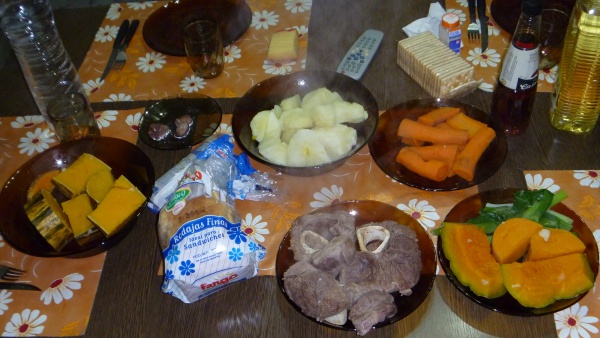Facts About Puchero
Puchero is a hearty stew with origins in Spain that has made its way into the kitchens of numerous countries, including Mexico, Argentina, Paraguay, Uruguay, Peru, Brazil, the Philippines, and specific regions of Spain such as Andalusia and the Canary Islands. Initially, the term "puchero" referred to an earthenware pot used for cooking, but it has since come to represent the flavorful stew prepared within it.
In Andalusia, puchero began as a humble peasant soup. Typically, it features an assortment of meats like beef, veal, pork, or chicken, along with bacon and cured bones. Vegetables such as potatoes, celery, chard, leeks, carrots, and turnips contribute both flavor and nutrition. This dish can be enjoyed in various forms: as a clear broth known as "caldo de puchero" or as a heartier soup enhanced with chickpeas, cured ham, boiled egg, and either rice, noodles, or bread. The meats are often served separately in a dish called "pringá" and any leftovers are creatively incorporated into other recipes like croquettes or "ropa vieja."
In the Río de la Plata region, including Argentina, Uruguay, and Paraguay, puchero is a staple during the colder months. This version is primarily beef-based, featuring ingredients such as ossobuco, sweet potatoes, sweet corn, chorizo, pork belly, cabbage, and eggs. It's a comforting dish that is commonly found in both family homes and regional restaurants.
The Filipino version of puchero includes beef stewed with saba bananas, potatoes, chorizo, bok choy, chickpeas, cabbage, and tomato sauce. Occasionally, chicken or pork is utilized instead of beef, adding a unique twist to the dish.
In the Yucatan, puchero varies considerably depending on the cook and the region. A more elaborate version, known as puchero de tres carnes, includes pork, beef, and chicken. This dish is brimming with various vegetables, saffron, allspice, and black pepper, and is typically served with a side of habanero chili, onion, radish, cilantro, and avocado.

 Bolivia
Bolivia